Earlier this week I launched part 1 of this 4 part marketing series. You can find that article here.
Today we're going to discuss some of the nuts and bolts to your marketing. We're going to discuss the types of marketing and how to create a noteworthy website so that you can get the most return on your time and financial investments.
Without further ado... Part II
Outbound vs. Inbound Marketing
Outbound
When was the last time you got a coupon or voucher in the mail and you acted on it immediately? How about the last time you saw a billboard driving down the road and joined that gym? I'm guessing it wasn’t anytime in recent memory.
When was the last time you downloaded a free PDF however, read a blog or news article, or viewed an eBook to learn more about a certain product or problem you wanted solved? Hint, you're doing that right now.
This distinction here is the difference between Outbound vs. Inbound marketing. Outbound marketing includes advertisements, flyers, mail pieces, referral cards, TV/Radio, and “external” marketing efforts that majority of gyms use. It essentially encompasses anything you do that reached out to prospects utilizing tactics that do not build value, and just promote price or a sale.
There are a few downfalls to outbound marketing. It can be very expensive, and it’s very difficult to track ROI. They can be very effective for heightening brand awareness, which is important, but it’s almost impossible to really understand the efficacy of those marketing efforts.
Inbound Marketing
In 2019, all marketing is permission based. This is where inbound marketing comes in. Inbound marketing includes creating content where prospects come to you to receive value. This includes blogs, social media posts, eBooks, video content, tutorials, courses etc.
The idea here is to build a vested audience, aka subscribers or fans, that routinely access your content to meet their educational and recreational needs. Unlike advertisements that cost hundreds, even thousands of dollars, writing an eBook, or creating a simple infographic to drive traffic from our social media pages, provide a more cost effective way for prospects to connect with our brand.
When an inbound initiative has been created, prospects are typically required to complete a lead form with their contact information to access the content. Opting in shows interest, and immediately subscribes them into your ecosystem of videos, information, media etc.
In order to attract the right clients, you need to provide something that they love right off the bat. If you provide them with amazing content prior to them even stepping foot in your door, they will be interested in learning what else you can do for them and guide them to become active engagers, then active clients.
Marketing Avenues
Where Do We Market / Hangout Hotspots?
Once your unique selling propositions and customer avatars are created for each segment, you can then market to your target audience.
For a good majority of your target, you'll utilize social media platforms and “likes”, but you can definitely use this in conjunction with "belly to belly" outbound efforts such as creating relationships with apartment complexes and creating corporate relationships.
In today’s market, buying a $10,000 billboard or just tossing a direct mail campaign against the wall and hoping it sticks is not effective and a waste of resources. There are quantifiable metrics you can track, softwares you can use, and more importantly money you can save by marketing directly to your target market by using the platforms they are on.
This starts by identifying where your target market hangs, and where they spend their time.
- What do they watch on youtube?
- What do they read online? (blogs, articles, books)
- What social media do they spend time on?
- Who do they follow on social media?
- What do they spend their money on?
- What groups or associations might they be part of?
This is where you categorize and segregate our audience so that you can target them online and put your message, your content and your offers in front of them.
Examples of platforms you can use are:
- Snapchat
- Youtube
- Podcasts
- Corporate Relationships
Building a STRONG Website
Having a strong website is one of the most essential tools in having a strong marketing strategy.
Most of your prospects come and check out your website prior to getting on the phone, dropping by, or even downloading any of your related materials. As a result, a strong web presence is important in staying connected to your members and potential members.
This requires your content to always be new and updated regularly. A strong website also helps build search engine rankings and gives people a reason to come back. Your facility blog as an example (You should start one of these if you haven't), should be updated and shared on regular intervals for this reason.
Websites with blogs attract 97% more web traffic than those without one.
Your main focus with your website is to provide information that your members and prospects want as soon as the webpage loads. This is called “above the fold”. The first impression a web guest has is important. The content should be enticing and lead them to provide us with their information so they can access more information. I've noticed the most successful sites typically have a welcome video on their website with access to some sort of free training or nutritional PDF that these guests can take advantage of.
This is referred to as “gated content”, so they provide you with information, to get information. Though your website content changes frequently, an interactive facility tour, transparent pricing, and the ability to join online are always staples that are incorporated on top websites
Put yourself in a prospect’s shoes (the 21st century prospect). What would you need to see in order to sign up right there on the spot? The site has to be professional and easy to navigate. Remember, this is normally the first or second touch point of a potential member, so you have to make it count.
See you next time for part III.





.png?width=110&name=Listing%20Image-basketball%20ladder%20drill%20%20(350%20x%20350%20px).png)













